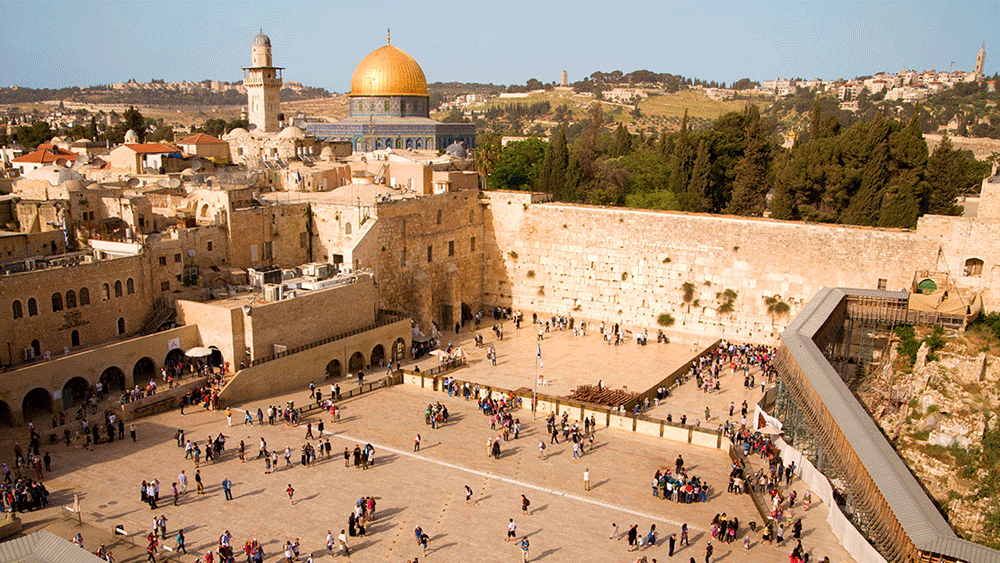FILTER
IMPACT BLOG
Email: customerservice@jnf.org
Jun 30, 2022 By Yossi Kahana Category: Education,
The Hebrew Month of Tammuz

Every month comes with a bounty of lights, blessings, and challenges that are its particular gift to the year.
“Tammuz” is the Babylonian name of this month, as are all of the “official” names of the months in the Hebrew Calendar. In the Bible, however, the month is referred to as “the Fourth of the 12 months of the Jewish calendar, counting from Hebrew month of Nisan.
The month of Tammuz begins the “season” of the summer. The three months of this season are Tammuz, Av and Elul.
On the third of Tammuz something happened that broke all the rules of nature. Joshua was leading the Jews in battle in Givon against their enemies, the Emorites. As the day drew to a close, the battle had not yet reached an absolute conclusion. For the moment the Jews seemed to be winning, but if the battle would reach its inevitable end as darkness came, there would be no decisive victory, and the next morning they would face off against an enemy who would come at them with renewed vigor. Each moment was precious.
A miracle happened. The sun didn't set. The day stretched on for 12 more hours.
The rules were broken, the battle was won, and at least for the moment, no one worshiped the sun, but only its holy, infinite, unknowable Maker.
The 17th day of Tammuz—a fast day that commemorates the day when the walls of Jerusalem were breached by the Romans in 69 CE, after a lengthy siege.
Four other traumatic events happened later in history that force us to think about who we are and who we want to be. To one degree or another, each event is an echo of the tragedy that took place on the 17th of Tammuz.
- Moses broke the Tablets when he saw the Jewish people worshipping the Golden Calf.
- During the Babylonian siege of Jerusalem, the Jews were forced to cease offering daily sacrifices due to the lack of sheep.
- Apostomos burned the holy Torah.
- An idol was placed in the Holy Temple.
Does this mean that the month of Tammuz is "a bad month"? Far from it. It is a month of challenge and confrontation. Without challenge, there is no growth. Without confrontation, there is no way to see things as they are.
One of Jewish National Fund – USA’s stories of how challenges can lead to growth is the city of Be'er Sheva, whose population in the greater municipal area is now close to half a million. But it wasn’t always like this. The city had long been regarded by Israelis as a sleepy, run-down development town, a dusty pit stop on the way to Eilat.
Thanks to our philanthropic investments, in the past few years, the city has experienced a makeover that almost defies belief. Museums, theaters, high-rise upscale apartment buildings, high-tech parks, giant malls, and new parks and restaurants have appeared around the city. The former dilapidated town is gradually undergoing aesthetic gentrification with the city's outer suburbs now nestled on green hills dotted by cool water fountains.
Nothing demonstrates this transformation as dramatically as the Be'er Sheva River Park. As if by magic, the park was created by Jewish National Fund - USA in an area described once as the "armpit" of the municipality, in what was a dry riverbed near the southern entrance of the city piled with wrecked cars, garbage, and sewage. It took months of cleanup with trucks going in and out to dispose of the rotting trash that had accumulated over decades.
The garbage is now gone, and in its place is a picturesque 8-kilometer-long park with lush green lawns, colorful trees, impressive landscaping, bicycle paths, and a promenade. Besides the expansive green at the park entrance, it's the many species of birds -- egrets, plovers, curlews -- that cheerily announce to visitors that here is an oasis in the Negev Desert.
G‑d always plants healing tools inside our hardships. Since Tammuz is the month of our despair, it must also provide the key to its repair.
